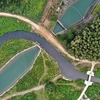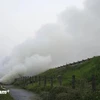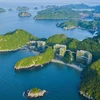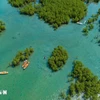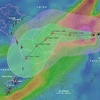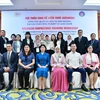A new law was needed to tackle water pollution, participants agreed at a workshop on policy and law on controls of water pollution held in Hanoi on May 18.
The call came after a health ministry report that each year 9,000 people die and 200,000 others are diagnosed with cancers because of using polluted water.
Nguyen Ngoc Ly, director of the Centre for Environmental and Community Research (CECR), a non-governmental organisation (NGO) based in Hanoi, said water pollution has been institutionalised in several legal documents, however the problem has not been solved and now seems to have gone out of hand.
She said the Law on Environmental Protection and the Law on Water Resources, which govern this issue, are too generic and this leads to poor enforcement.
"Further, inconsistent provisions on ways to control water pollution in these laws created confusion about whom, what and how they target," she said.
Ly added another problem is that the current laws do not detail the technology to be used for water pollution treatment, which is a loophole where State money could be spent on outdated technology. Corruption is also often involved.
Nguyen Van Bay, director of Department of Water Resources Management (DWRM) under the Ministry of Natural Resources and the Environment (MONRE) admitted that limited human and financial resources and poor awareness and law compliance are to blame for water pollution.
He suggested the Government add criminal penalties for acts of polluting water resources, increase fines, build a national system for monitoring activities, and publicise the names of establishments that cause pollution or threaten the environment.
A DWRM report shows that most of the main rivers in Vietnam are polluted. It also says that agricultural chemicals (pesticides, herbicides and fertilisers) and animal feeds and their residues are deposited on the beds of rivers and ponds.
It said these are the breeding ground for pathogens and harmful algae in surface water and their percolation through the soil contaminates groundwater.
DWRM statistics show that 70 percent of industrial parks in Vietnam have no waste facilities or substandard waste-water facilities.
Out of the nation's 639 industry clusters, which are a smaller version of industrial parks or industrial estates, only 42 possess a concentrated waste water system.
Almost all craft villages throughout the country discharge waste water directly into rivers, canals and ponds.
Vietnam has 3,450 rivers that are longer than 10 kilometres. It also has 2,900 lakes and reservoirs with a total holding capacity of 65 billion cubic metres.-VNA
The call came after a health ministry report that each year 9,000 people die and 200,000 others are diagnosed with cancers because of using polluted water.
Nguyen Ngoc Ly, director of the Centre for Environmental and Community Research (CECR), a non-governmental organisation (NGO) based in Hanoi, said water pollution has been institutionalised in several legal documents, however the problem has not been solved and now seems to have gone out of hand.
She said the Law on Environmental Protection and the Law on Water Resources, which govern this issue, are too generic and this leads to poor enforcement.
"Further, inconsistent provisions on ways to control water pollution in these laws created confusion about whom, what and how they target," she said.
Ly added another problem is that the current laws do not detail the technology to be used for water pollution treatment, which is a loophole where State money could be spent on outdated technology. Corruption is also often involved.
Nguyen Van Bay, director of Department of Water Resources Management (DWRM) under the Ministry of Natural Resources and the Environment (MONRE) admitted that limited human and financial resources and poor awareness and law compliance are to blame for water pollution.
He suggested the Government add criminal penalties for acts of polluting water resources, increase fines, build a national system for monitoring activities, and publicise the names of establishments that cause pollution or threaten the environment.
A DWRM report shows that most of the main rivers in Vietnam are polluted. It also says that agricultural chemicals (pesticides, herbicides and fertilisers) and animal feeds and their residues are deposited on the beds of rivers and ponds.
It said these are the breeding ground for pathogens and harmful algae in surface water and their percolation through the soil contaminates groundwater.
DWRM statistics show that 70 percent of industrial parks in Vietnam have no waste facilities or substandard waste-water facilities.
Out of the nation's 639 industry clusters, which are a smaller version of industrial parks or industrial estates, only 42 possess a concentrated waste water system.
Almost all craft villages throughout the country discharge waste water directly into rivers, canals and ponds.
Vietnam has 3,450 rivers that are longer than 10 kilometres. It also has 2,900 lakes and reservoirs with a total holding capacity of 65 billion cubic metres.-VNA






